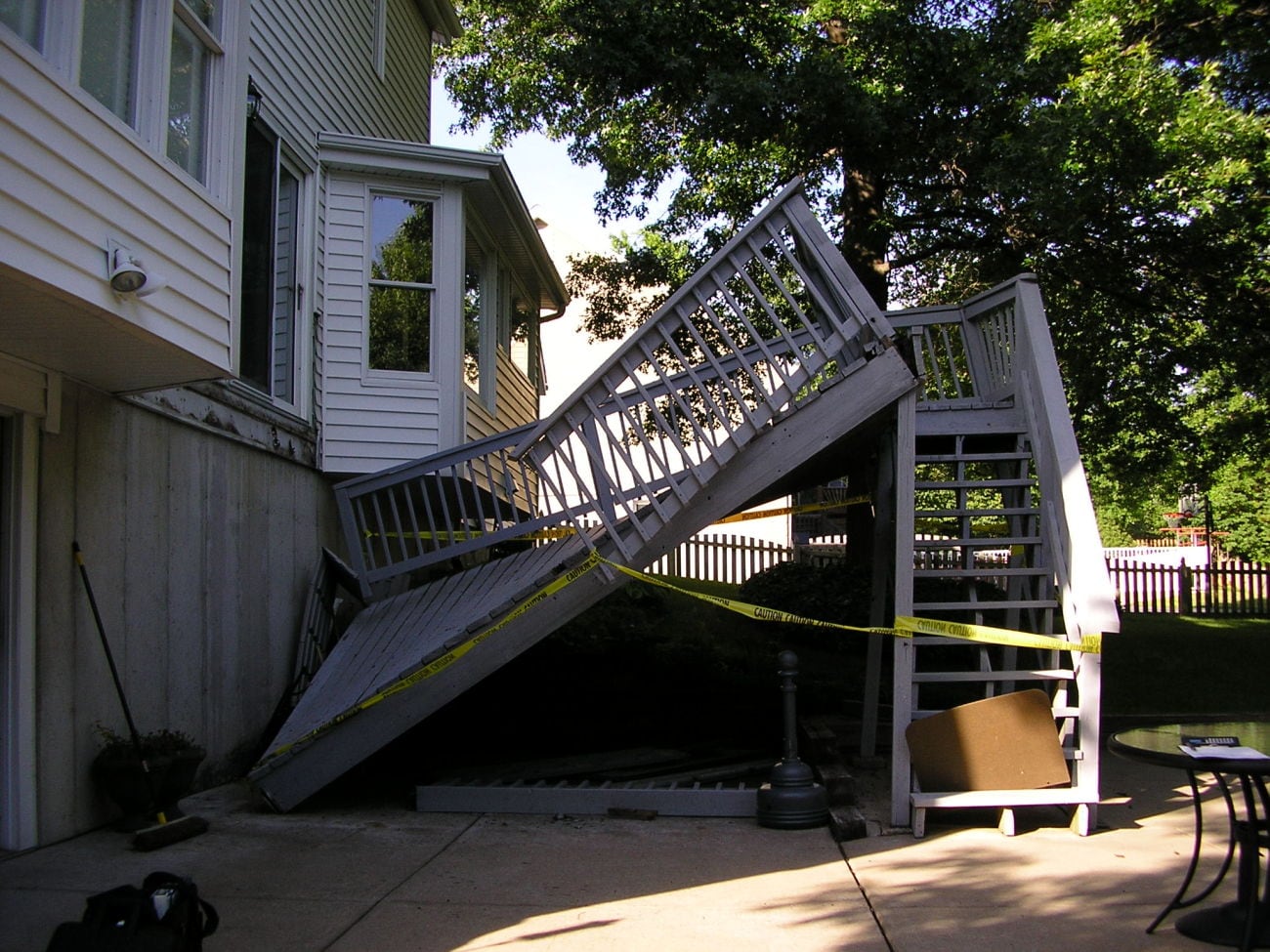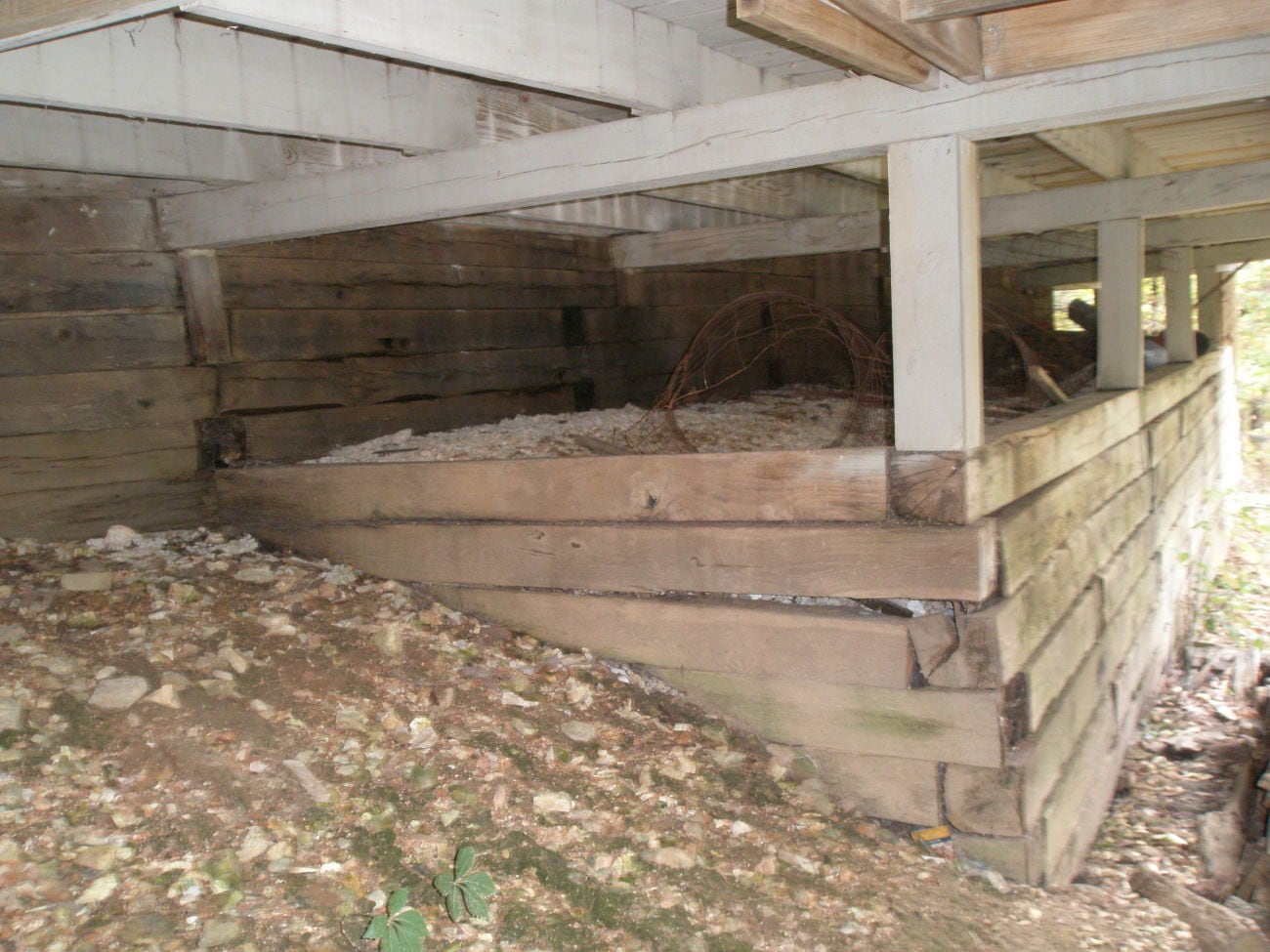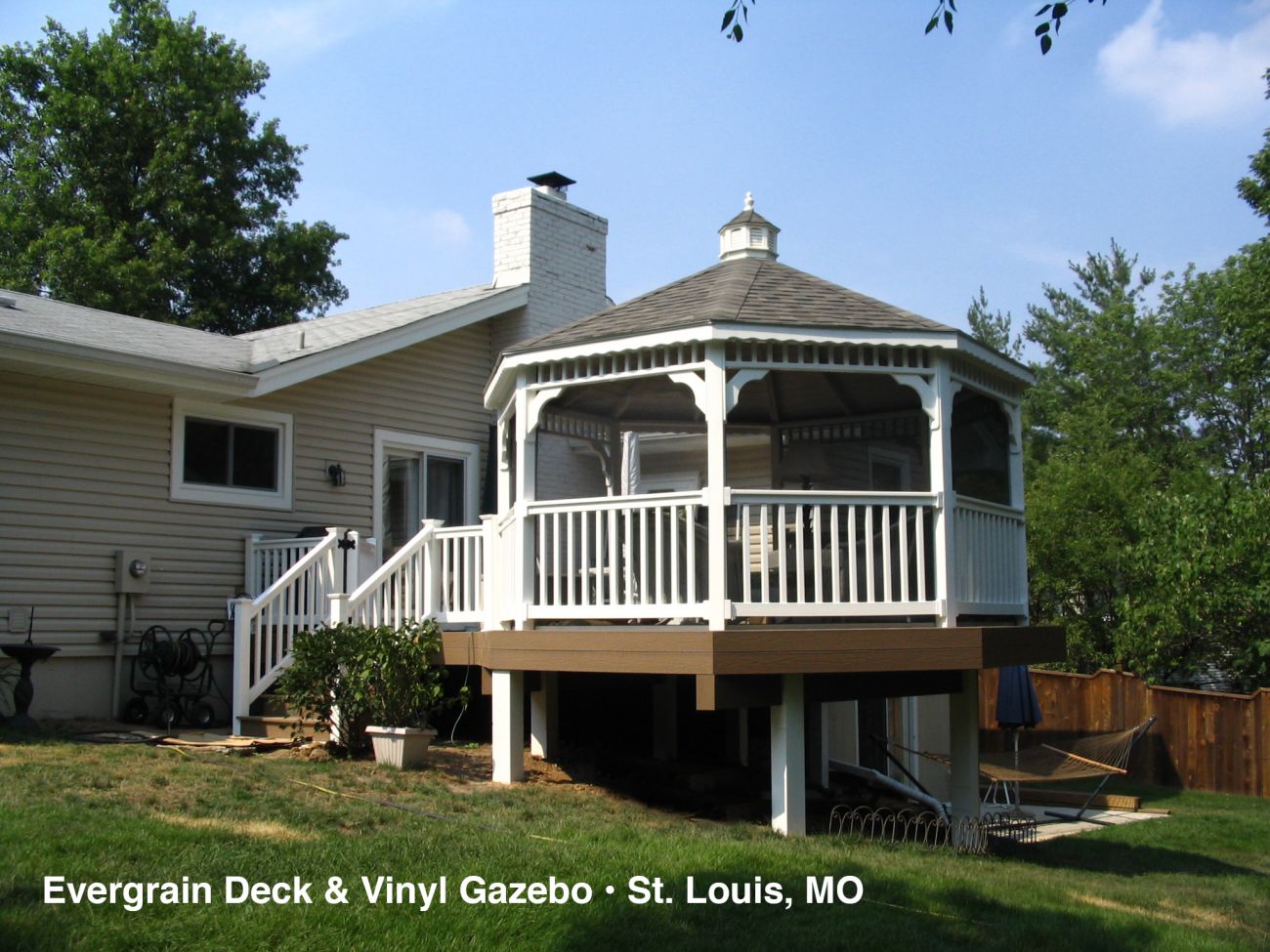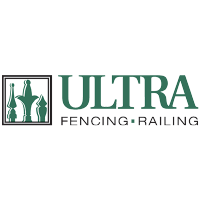Decks create a welcoming space for gatherings and relaxation, but they can also hide serious safety risks. Deck failure isn’t just about visible decay; it can lead to sudden collapses, costly damage, or even serious injuries.
People have to come to Outdoor Living Inc. over the years for help after a deck failure, which is why we are able to identify some of the most common causes to look out for. Here is everything you need to know about the hidden dangers and what to do about them!
The 4 Most Common Causes of Deck Failure We See at Outdoor Living (And Their Solutions)
1. Ledger Has Pulled Away From the House
One of the most common and potentially most damaging reasons for deck failures is that the ledger board pulls away from the house. The ledger board is usually a 2×10 or 2×12 that is attached to the house. The joists for the deck are attached to the ledger board. The ledger board should be attached to the house with ½” lag screws or 1/2” carriage bolts. Many decks were installed over the years using nails to attach the boards.
Because of the weight carried by that board and the constant movement of the structure as it is used, those nails can loosen. At some point, they will eventually fail, and the deck could fall off the house.
SOLUTION:
Inspect your ledger board to see how it is attached. If it is nailed, supplement the nails with ½” lag screws or LedgerLocks at 12” intervals. This inspection is especially important if the deck is over 15 years old when building codes did not require lag screws.

2. Ledger Board Splits
If a ledger board is installed with lag screws, but they are all in a straight line there is a risk of the board splitting. If that happens, it may not be able to carry the weight and cause the deck to fall. Today’s codes require that the lag screws be staggered to prevent the board from splitting.
SOLUTION:
Inspect the ledger board to see what pattern was used for the lag screws. If they are in a line, there are a couple of options. Look to see if there are signs of splitting that align with the lags. If there are no signs, inspect the board annually for signs of splitting. You could also install new lags in alternating spaces to create a staggered pattern. You would then need to remove the ones you are replacing and plug the holes.

3. Improper Joist Installation
Joists are usually installed using joist hangers (galvanized metal braces) that have flanges. The hangers have holes in them that should have a galvanized joist hanger nail in each hole. If the nails are not galvanized, they can fail, causing the joist to fail. One joist failure won’t make your deck fall, but enough of them failing will create a structural problem.
SOLUTION:
Inspect the joists to see how they are attached to the ledger board or band board. If there are holes in the hangers without nails, put hanger nails in them. If the nails are rusting, try replacing them one by one.

4. Improper Post Installation
All of the weight for your deck is transferred to the posts, so they are supporting your deck. Properly installed posts will sit on concrete footings that go about 30” deep. Some installation methods
may have the concrete above the ground with the post attached to it. Another method is to bury the post in the hole, but it will still sit on a concrete footing. If they sit on anything else, there is a risk that they will cause your deck to sag. You could eventually have a deck failure. It is also important that the beams sit on or attach to the post correctly. Beams should be attached to the posts with carriage bolts and/or sit fully on the post.
SOLUTION:
Inspect the posts and beams to make sure they are properly installed. If not, this is a job that is best handled by a professional. Contact your deck builder or a skilled carpenter to remedy the problem.

Other Common Causes of Deck Failure
- Substandard Materials: Untreated or low-quality wood, incorrect connectors, and cheap fasteners don’t last. Corrosion eats away at metal, while untreated wood rots quickly.
- Building Code Violations: Skipping code requirements, such as proper spacing for footings or the wrong size joists, sets up decks for structural failure. Many older decks are grandfathered in, but they might not meet modern safety standards.
- Climate Effects: Wet climates speed up water damage and wood rot, while extreme cold can crack boards and connectors. Seasonal cycles strain unprotected decks, especially if not cleaned or sealed.
The North American Deck and Railing Association (NADRA) often highlights these common causes as major risks for homeowners. Their pro fixes for fighting deck failure include using proper flashing and regular inspections.
Visible Warning Signs That Your Deck is at Risk
Deck failure happens when structural elements like joists, the ledger board, or connectors can’t hold up the load. Sometimes it’s dramatic; a deck collapse during a crowded barbecue makes headlines, but most deck failures start quietly. Watch for these clear but silent signals of danger:
- Loose or wobbly railings
- Deck boards that feel spongy or bounce underfoot
- Swaying or excessive movement
- Staining, signs of corrosion, or leaks at the ledger board
- Visible splits or rot in support posts or joists
- Rusty or missing fasteners and connectors
- Footings that have shifted or settled
The Consumer Product Safety Commission and professional home inspectors agree that noticing even a single warning sign means the entire deck should be checked. If you spot these, contact a professional deck builder for a full safety review before using the space.
How to Prevent Deck Failure and What to Do if You Suspect a Problem
A few regular habits go a long way in preventing deck collapse. Use these steps to lower your risk:
- Inspect regularly: Look over the deck at least every spring and fall for damage, especially around the deck ledger and support posts.
- Clean and clear debris: Leaves, snow, and dirt trap moisture and speed up decay. Clear gaps between deck boards and sweep surfaces often.
- Repair or replace damaged parts: Fix corroded connectors, loose fasteners, and rotted wood right away.
- Upgrade support structures: Consider replacing wood with steel deck framing for stronger, longer-lasting durability. The benefits of steel deck framing include resistance to insects and rot, and structural strength that meets newer building codes.
If you find anything suspicious—like excessive sway or cracked boards—keep people off the deck and call a professional. Homeowners’ insurance may even require an inspection after certain weather events or before selling a property.
Best Practices for Deck Maintenance
Routine care tasks can make all the difference:
- Sweep and clear off dirt, leaves, and snow after storms.
- Wash the deck yearly with a safe cleaner to prevent mold and algae.
- Check hardware like lag screws, joist hangers, and connectors for rust or looseness.
- Reseal or stain wood boards every few years, especially treated wood.
- Keep an eye on the ledger board for signs of water damage or separation.
Simple routines like these help property owners avoid expensive repairs later and maintain deck safety for family and friends.
When to Repair vs. Replace: Deciding the Best Solution
Sometimes, fixing a few fasteners or replacing a section of deck boards is enough. Other times, the deck has too much rot or widespread structural failure—especially in older decks—and replacement is safer.
When deciding, consider:
- Extent of damage: If more than a quarter of joists, footings, or the ledger board are affected, full replacement is usually safer.
- Material condition: Corrosion in connectors or severe wood rot often calls for a new deck.
- Compliance: If repairs won’t bring the deck up to current building codes, replacement is the best option.
- Future durability: Upgrading to steel deck framing improves safety and reduces maintenance over time.
Professional deck builders can assess each situation and help homeowners decide when repair is enough or when a new deck is needed for peace of mind.
Contact Outdoor Living Inc.
Deck failure doesn’t just threaten property—it puts loved ones at risk. Stay alert, ask questions when something feels off, and never ignore the small signs. Regular care keeps outdoor living safe for everyone.
Whether you want someone to build your deck or you are building it yourself, Outdoor Living Inc. specializes in custom deck designs, repairs, and replacements—helping turn any outdoor space into a safe place for memories that last.








